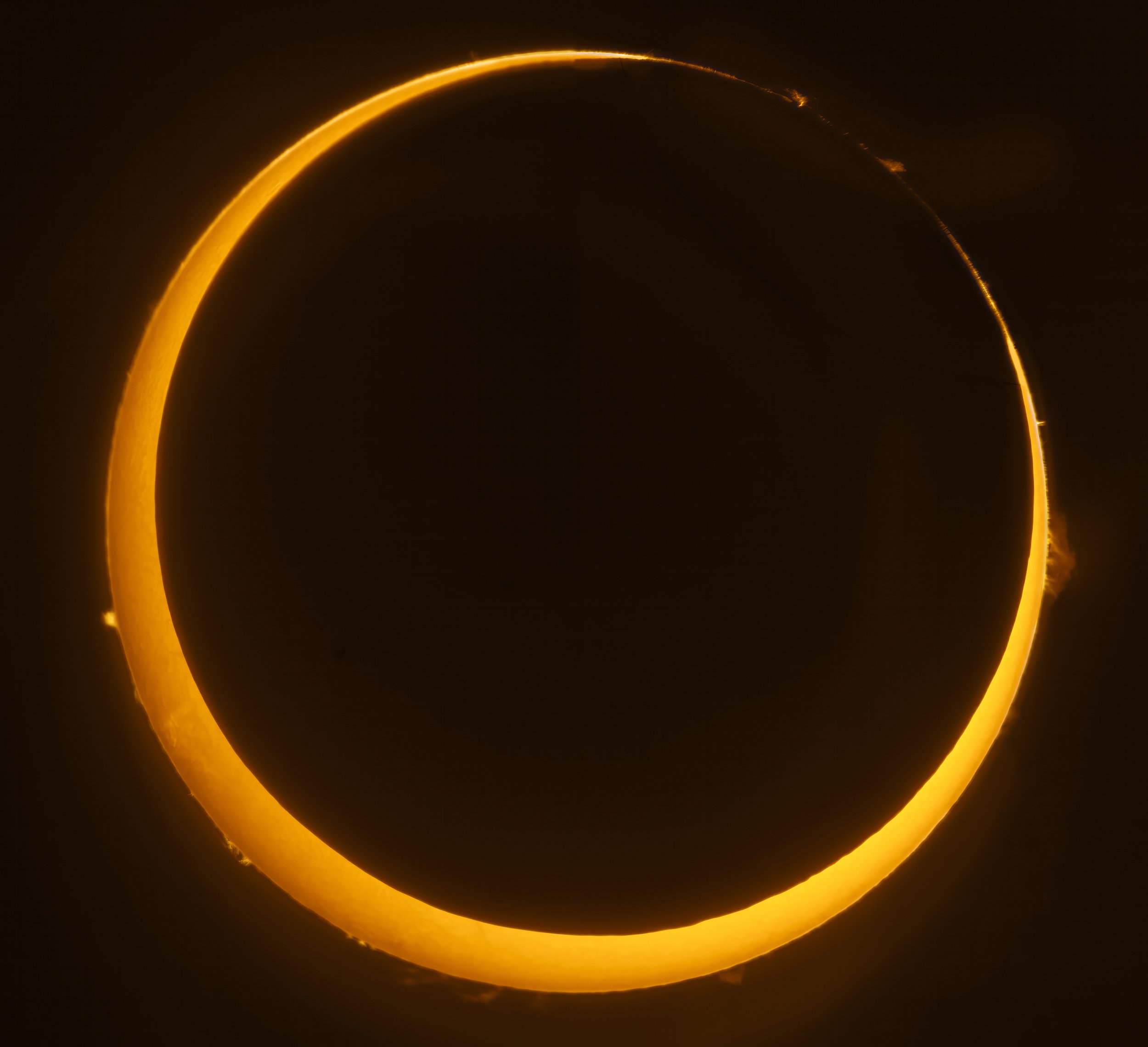
The Moon is silhouetted against the sun during an annular solar eclipse viewed from Jiggs, Nevada October 14, 2023. Unlike a total solar eclipse, during an annular eclipse the Moon is farther from the earth and does not completely obscure the Sun’s disc.

The Moon is silhouetted against the sun during an annular solar eclipse viewed from Jiggs, Nevada October 14, 2023. Unlike a total solar eclipse, during an annular eclipse the Moon is farther from the earth and does not completely obscure the Sun’s disc.
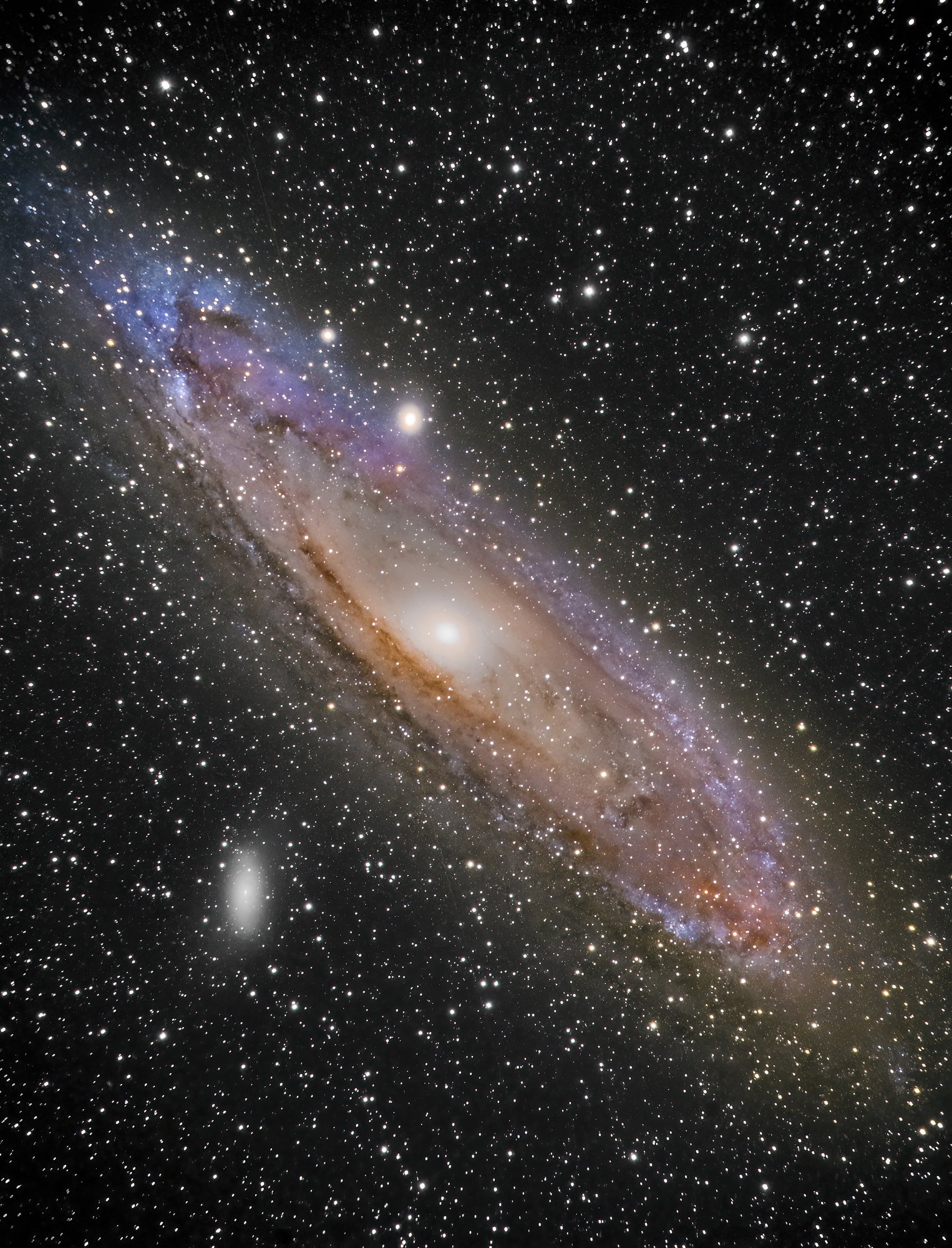
The Andromeda Galaxy, also known as M31. This galaxy is approximately 2.5 billion light years from Earth, and is approximately 150,000 light years in diameter. (William Optics GT71, Celestron AVX mount, ZWO ASI 1600MM camera.)

Seen from West Sacramento, comet C/2020 F3, commonly referred to as comet 'Neowise' is visible in the northeast sky over the skyline of Sacramento, Calif. Sunday, Jul. 12, 2020.

The Milky Way arches above the red slave huts on the southern tip of Bonaire, Friday, July 26, 2019. The four-foot high huts were built in the 1850s, and are a remnant of a time when Dutch colonists used slave labor to extract salt from sea water on the south end of the island.

Visible from Shingle Springs, California on Monday, July 30, 2018 through smoke from California wildfires, the International Space Station (ISS) can be seen speeding across the face of the Sun at approximately 20,000 mph.
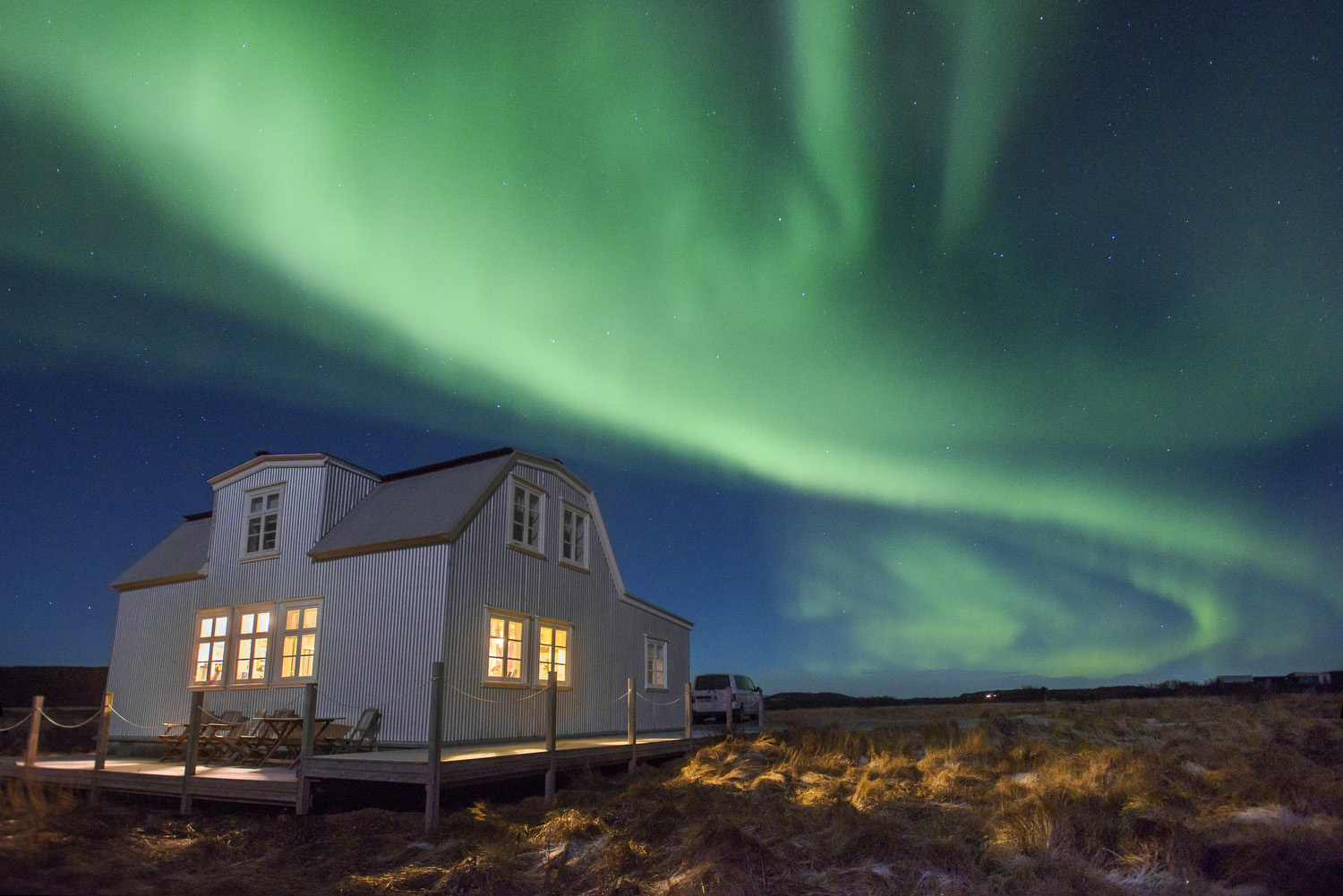
Aurora Borealis over the Lambalaekur farmhouse in Borgarnes, Iceland on Tuesday, December 26, 2017.

McArthur Burney Falls Memorial State Park in Burney, CA at 2:00 AM on Monday, September 10, 2018.

Total Solar eclipse seen from Mitchell, OR. on Monday, August 21, 2017.

In this image in Hydrogen-alpha light derived from video and in false color, sunspot activity is clearly visible as the moon partially obscures the sun during the total solar eclipse near Mitchell, OR on Monday, August 21, 2017.
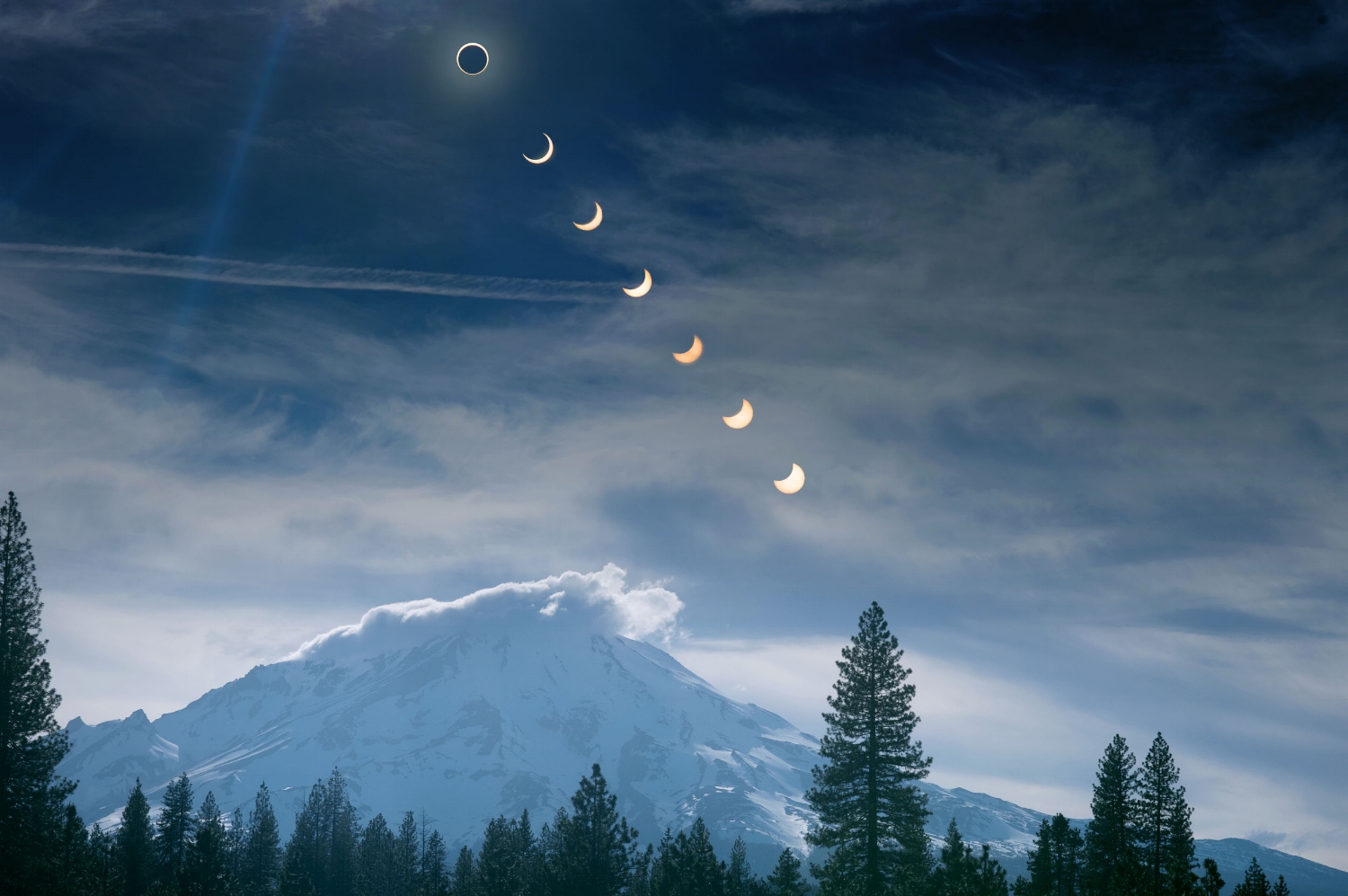
A multiple exposure of the annular solar eclipse over Mt Shasta near McCloud on Sunday, May 20, 2012.
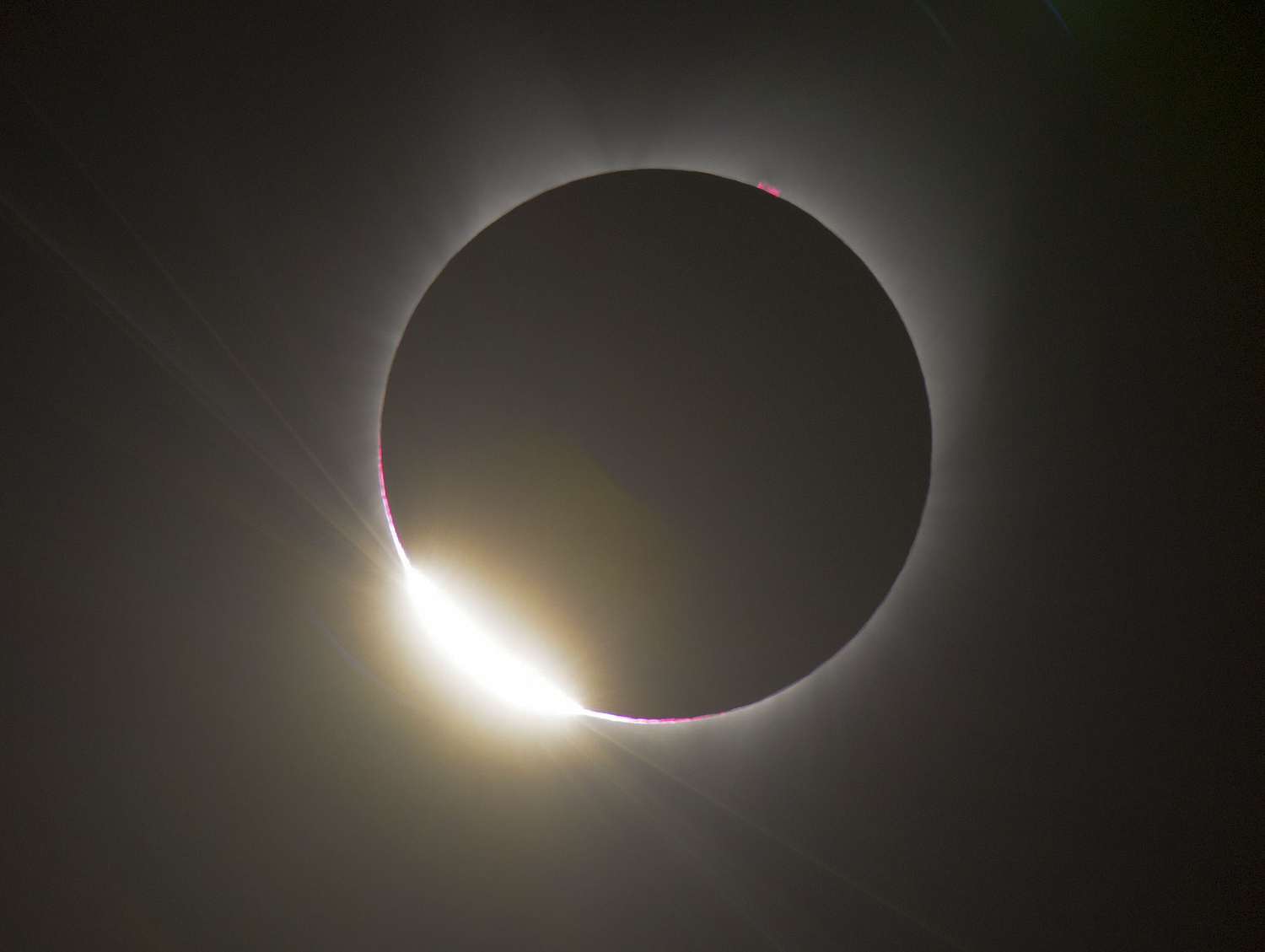
The last bit of sunlight disappears behind the moon in aphenomenon commonly called the "Diamond Ring" during the total solar eclipse near Mitchell, OR on Monday, August 21, 2017.

The corona is revealed during the total solar eclipse near Mitchell, OR on Monday, August 21, 2017.

Total solar eclipse taken in Todos Santos, Mexico on July 11, 1991. This is a composite of 9 different exposures to reveal subtle details that cannot be captured in a single exposure.

Visitors line up to look through a telescope at Squaw Valley Resort on Friday July 13, 2007.
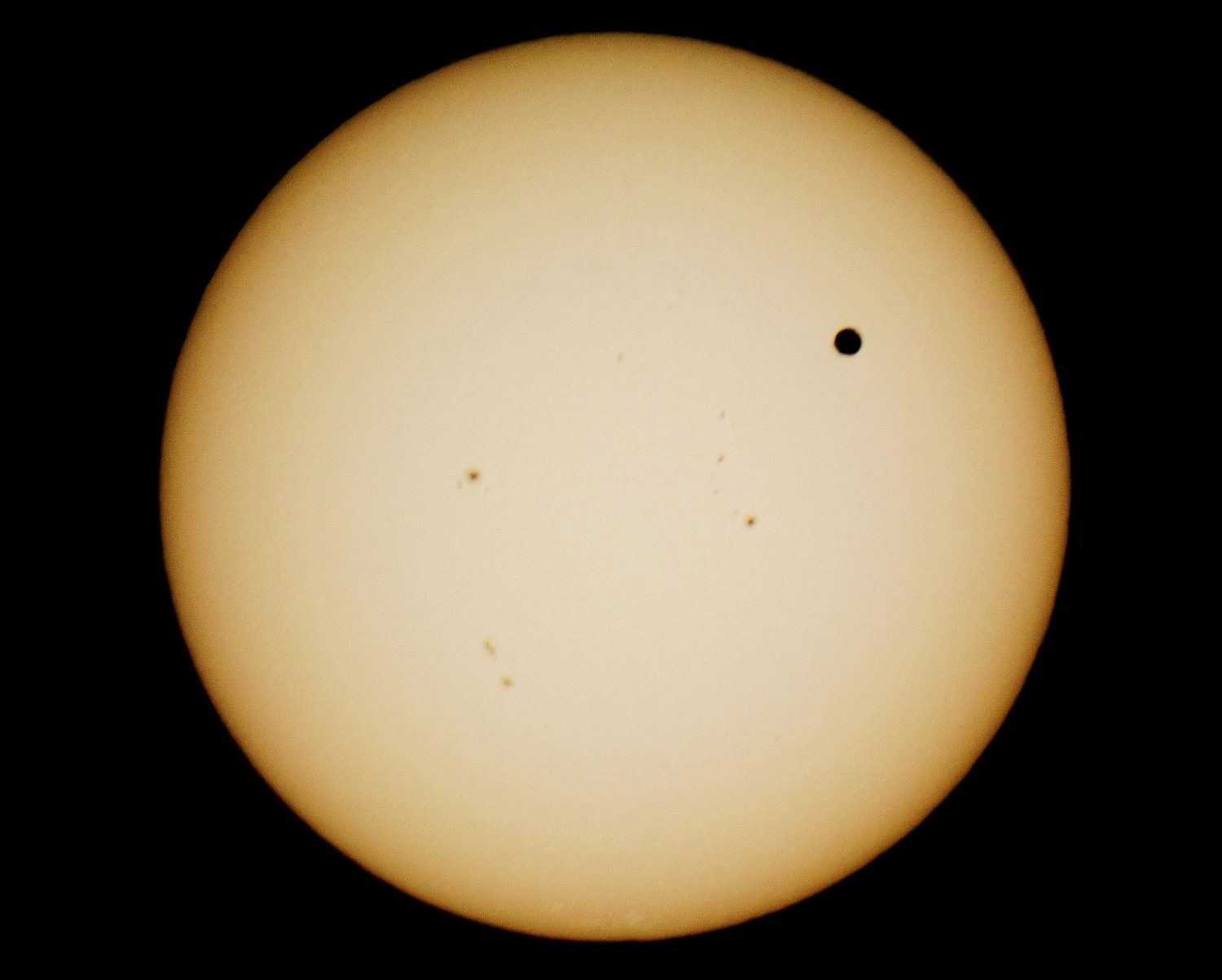
A silhouette of the planet Venus against the sun during the Transit of Venus viewing event at the El Dorado Observatory in Placerville, CA on Tuesday, June 5, 2012.
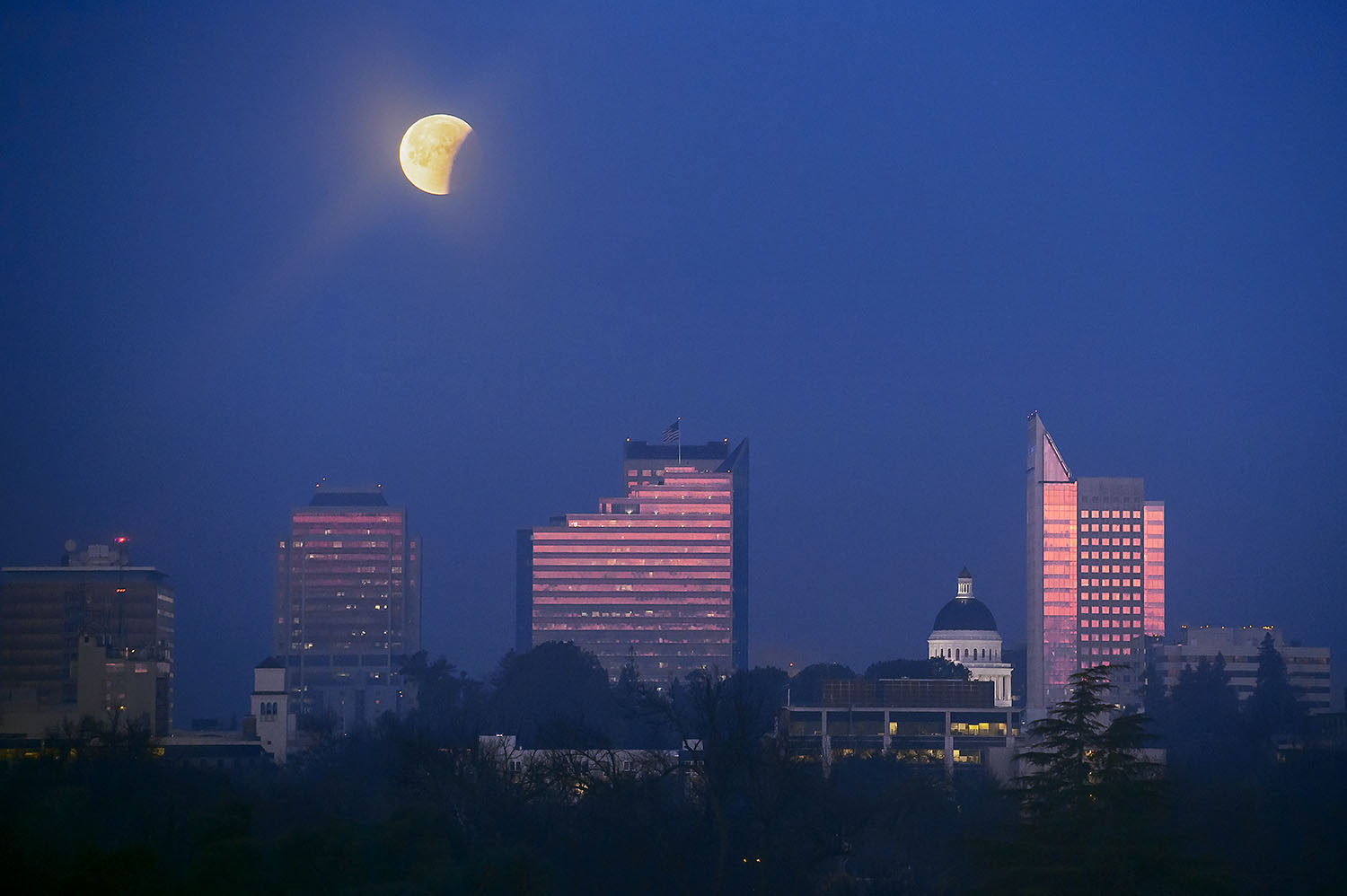
The partially eclipsed moon is seen through a thin veil of morning fog over the skyline of Sacramento on Wednesday, January 31, 2018. This morning's total lunar eclipse coincided with a "blue moon" and a "super moon."

A flock of ducks flies past an ultralight pilot near White Rock Road in El Dorado Hills on Friday, March 14, 2014.
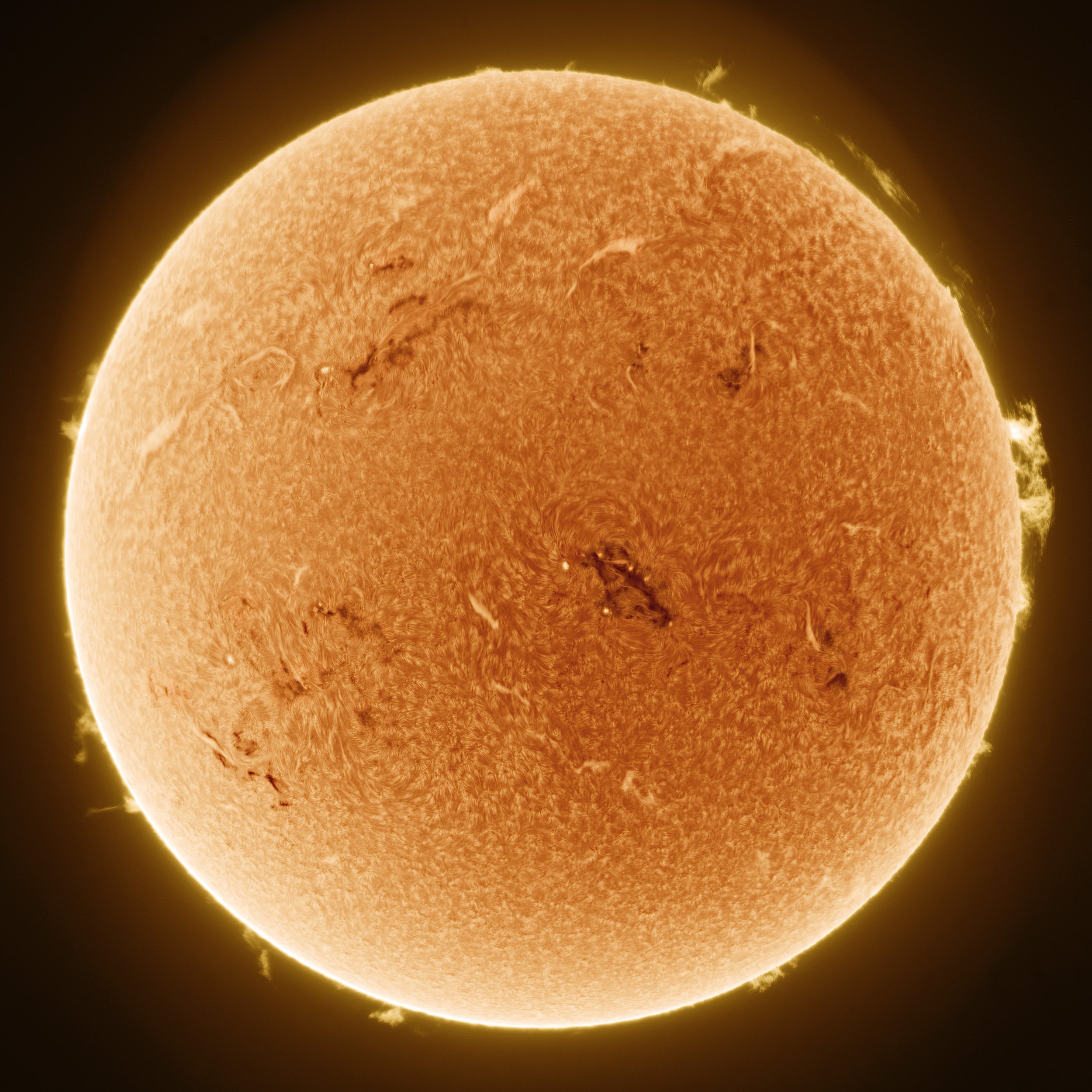
The Sun’s chromosphere in Hydrogen alpha light. This image was taken with a telescope equipped with a special filter (etalon) that only passes light from Hydrogen. These details would otherwise be lost due to the intense brightness of the underlying photosphere.
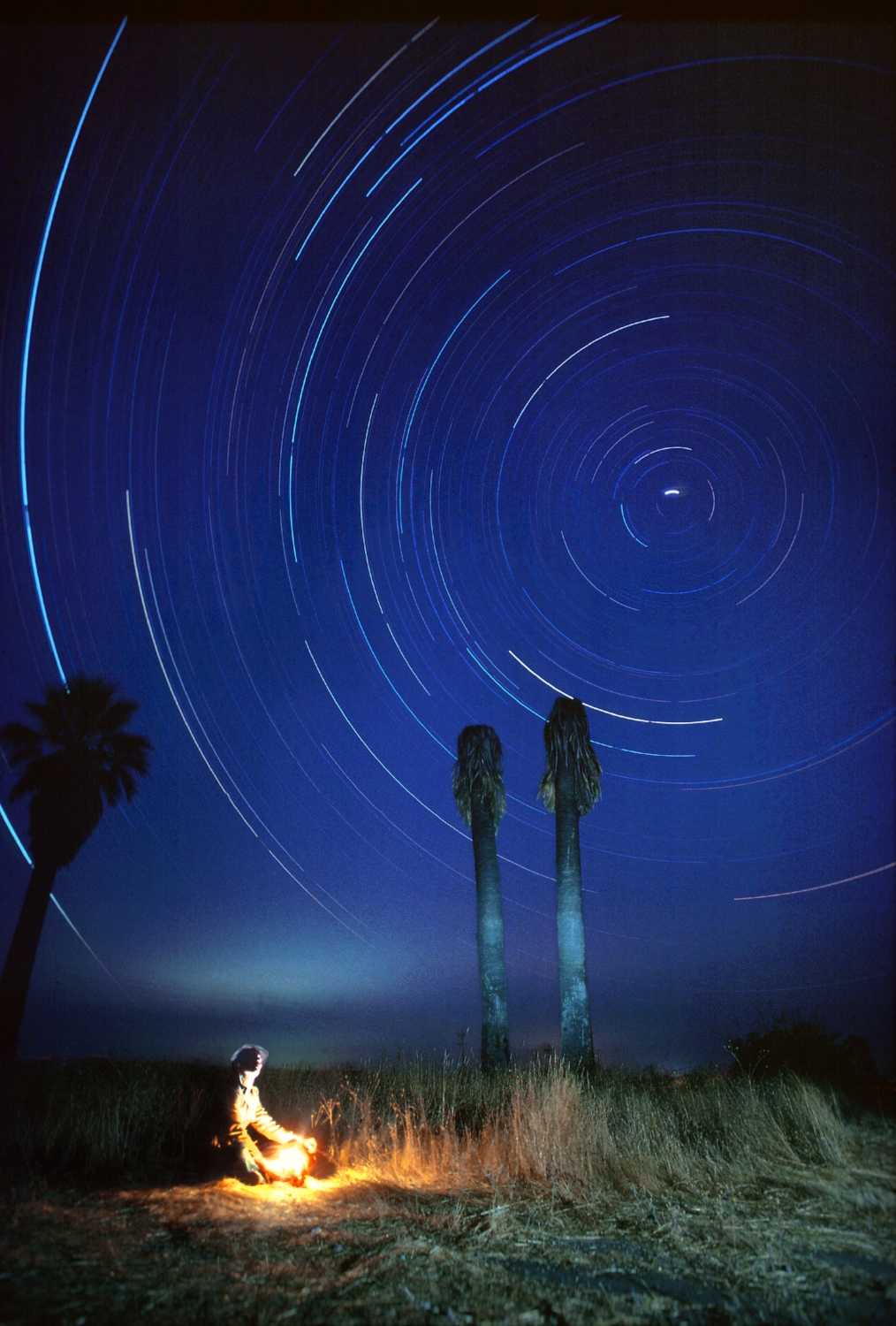
Due the Earth's rotation during a four hour exposure, the stars appear to spin around Polaris (the north star) in Lincoln, CA.
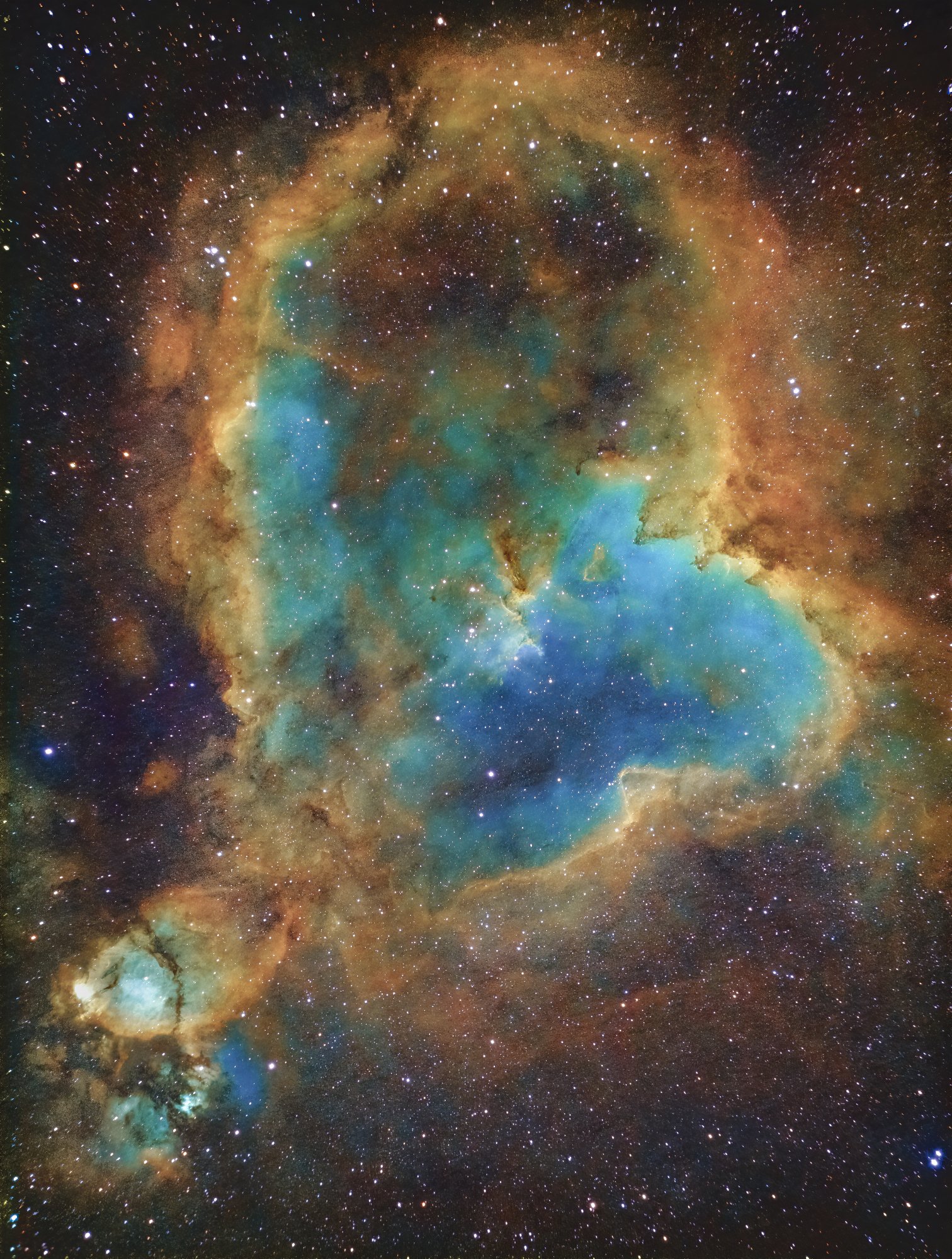
The Heart Nebula, also known as IC 1805, is approximately 7,500 light years from Earth and is approximately 200 light years across. It is a cloud of ionized hydrogen, oxygen, and sulphur gasses, and is a part of our own Milky Way galaxy. (William Optics GT71, Celestron AVX mount, ZWO ASI 1600MM camera.)
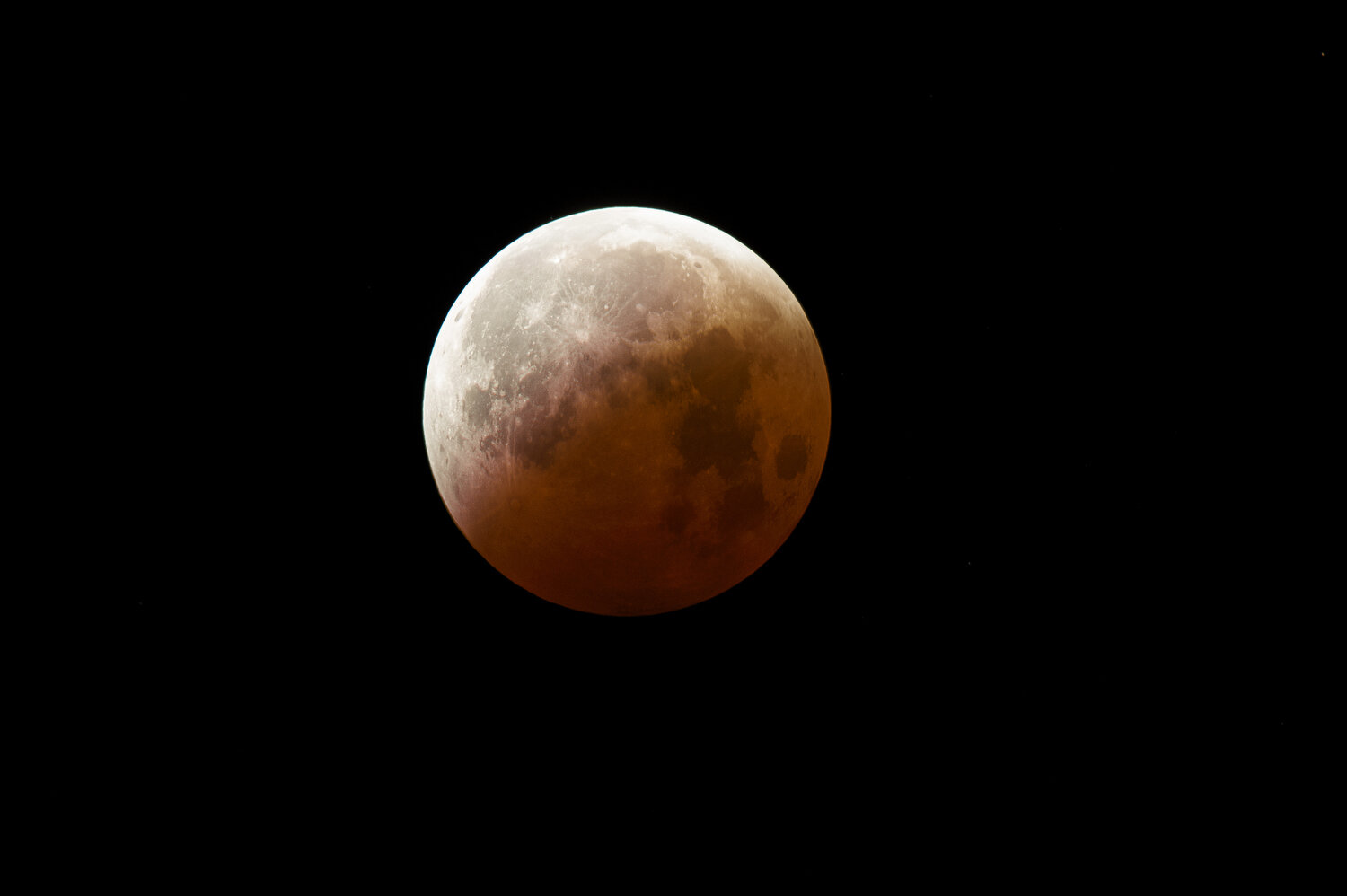
A Partial lunar eclipse seen from El Dorado, Calif., at 4:46 am Wednesday, October 8, 2014.
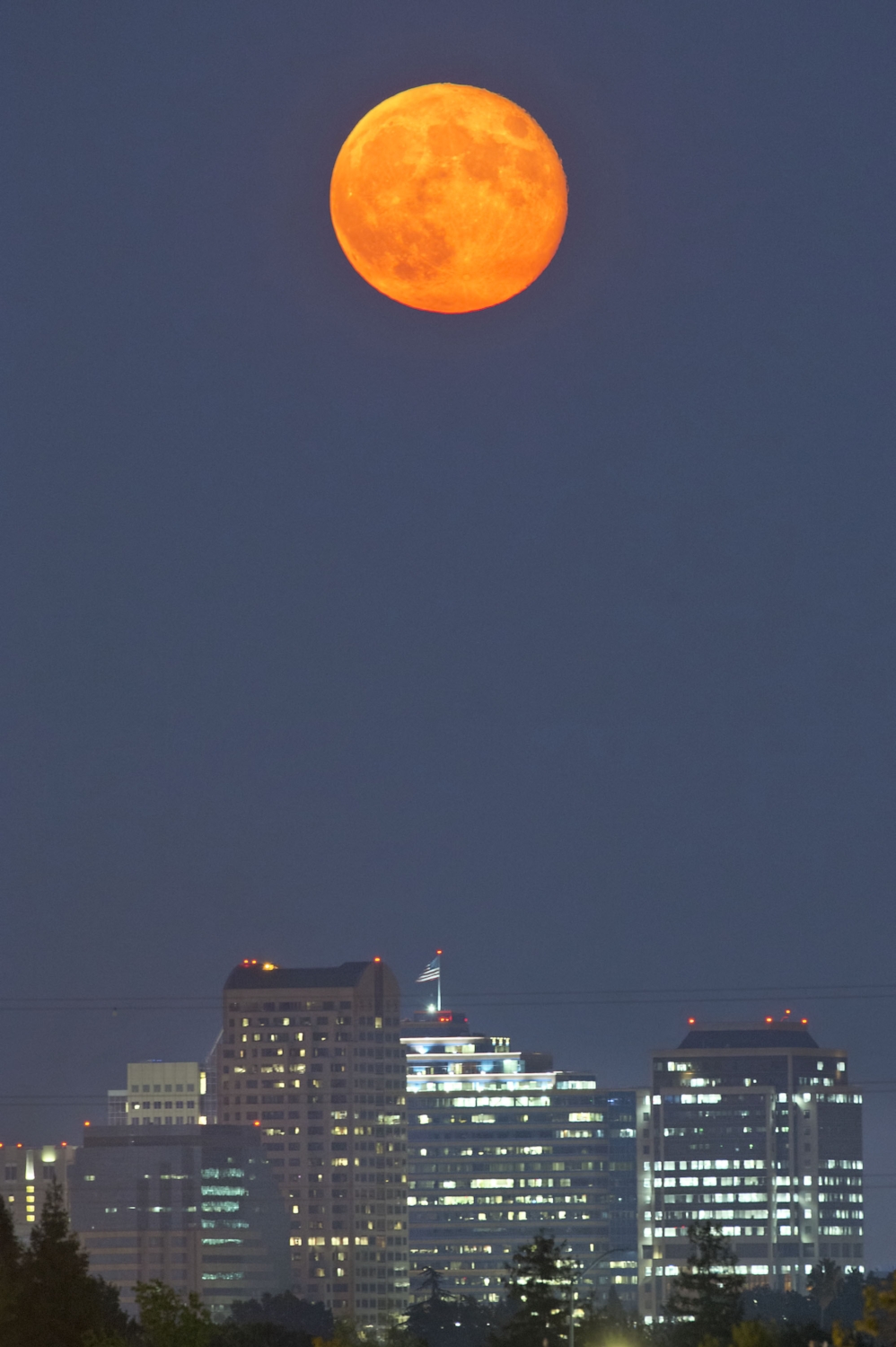
The "Supermoon" rises over the Sacramento skyline on Tuesday, September 9, 2014. When the moon's orbit brings it closest to Earth, or perigee, when it is full it is called a "Supermoon."

A waxing crescent moon in close proximity in the sky to the planet Venus (bright star in the center of the frame) and Mars (the red speck between two) seen through the branches of a tree in Auburn on Friday, February 20, 2015.
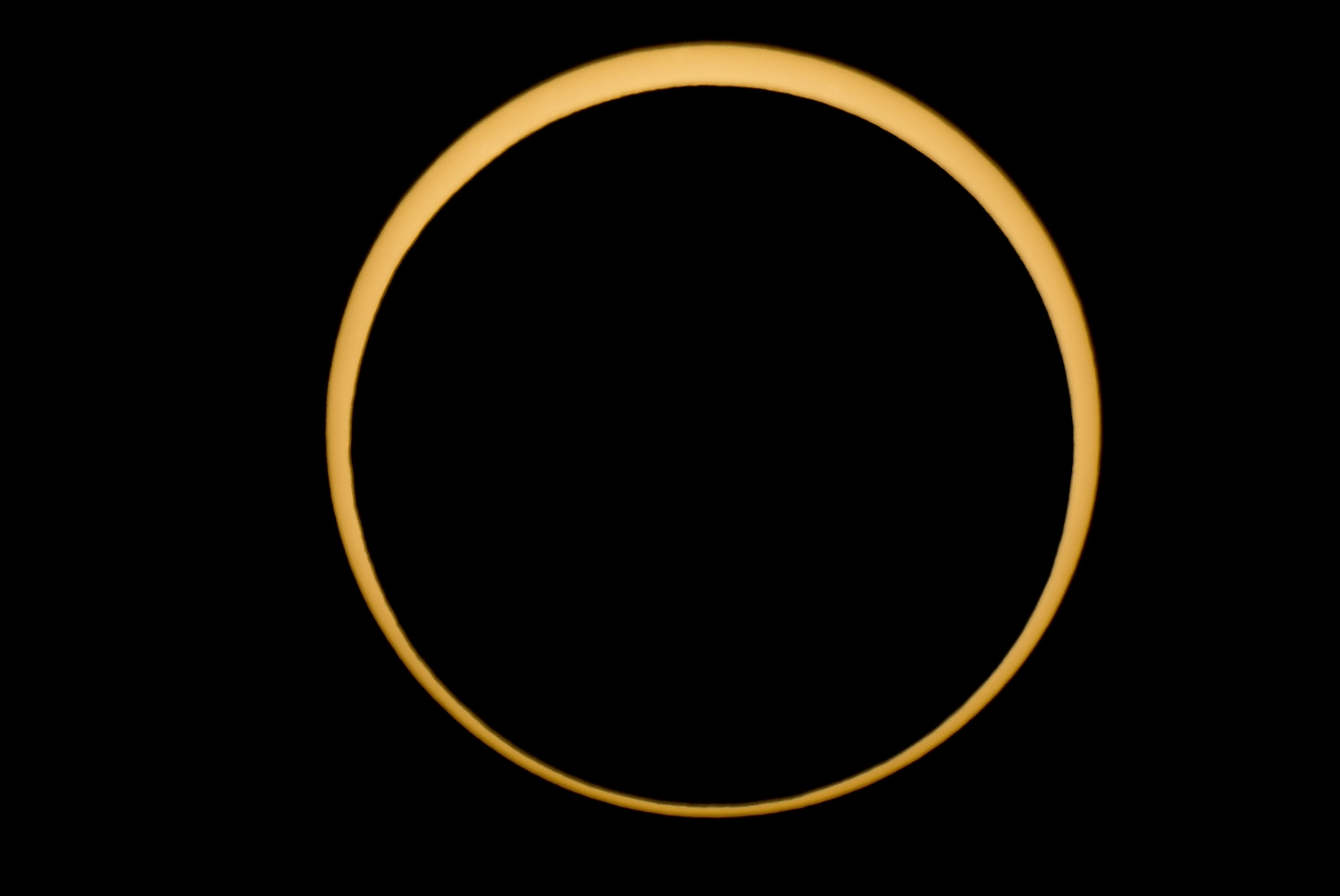
The moon is silhouetted against the sun in this annular solar eclipse near McCloud, CA on Sunday, May 20, 2012. Unlike a total solar eclipse, the sun is not completely obscured due to the moon's greater distance from the earth.
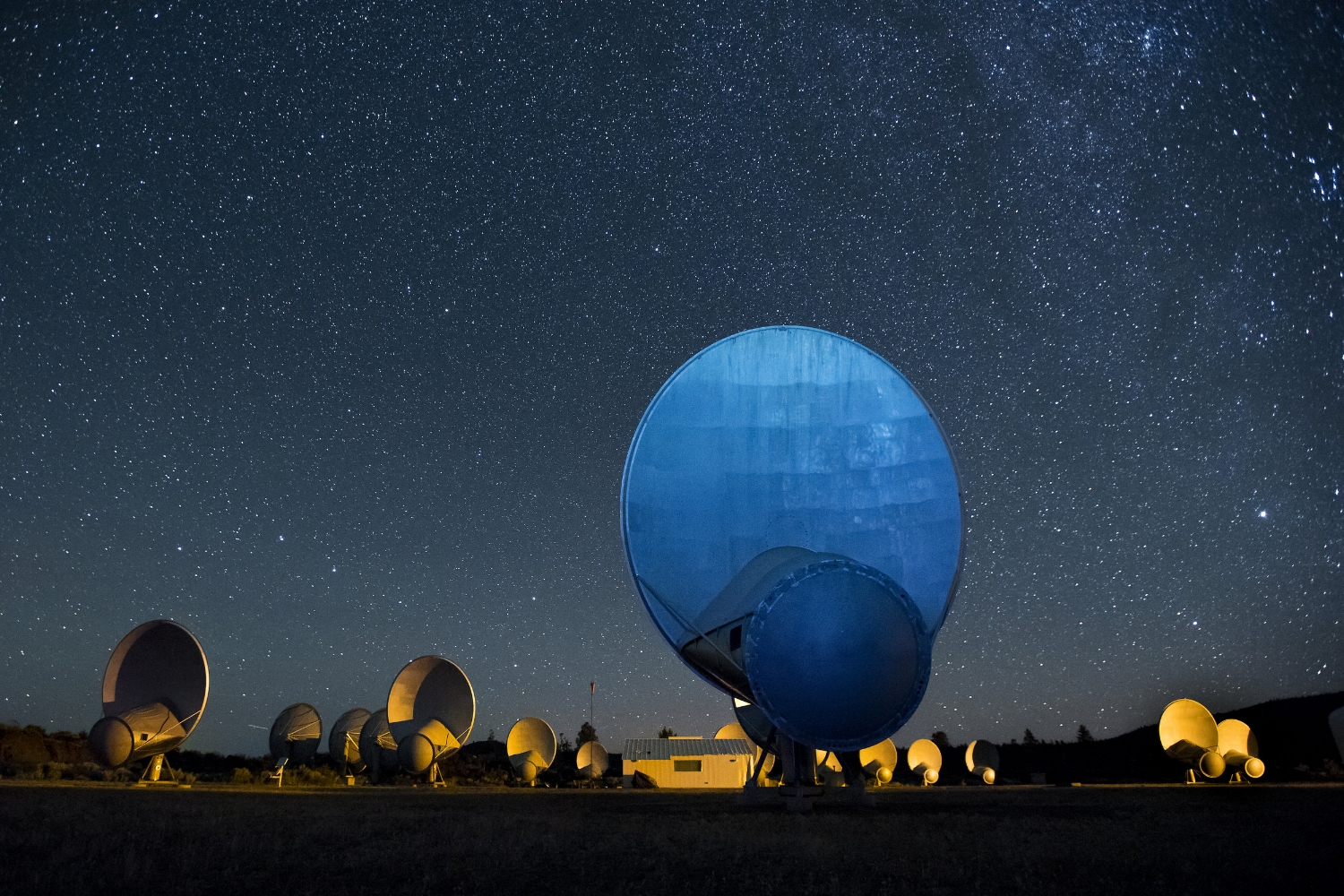
SETI researchers monitor the heavens with a field of radio telescopes at the Allen Telescope Array at the Hat Creek Radio Observatory in Hat Creek northern California on Thursday, September 1, 2016.

Alu Vali covers his eyes during a total solar eclipse in Hula, Papua New Guinea on November 22, 1984. The Papuan government distributed leaflets warning remote villagers of the risks of looking directly at the sun. Although it is safe during the total phase, Vali was unwilling to look. The total eclipse lasted only 51 seconds here.
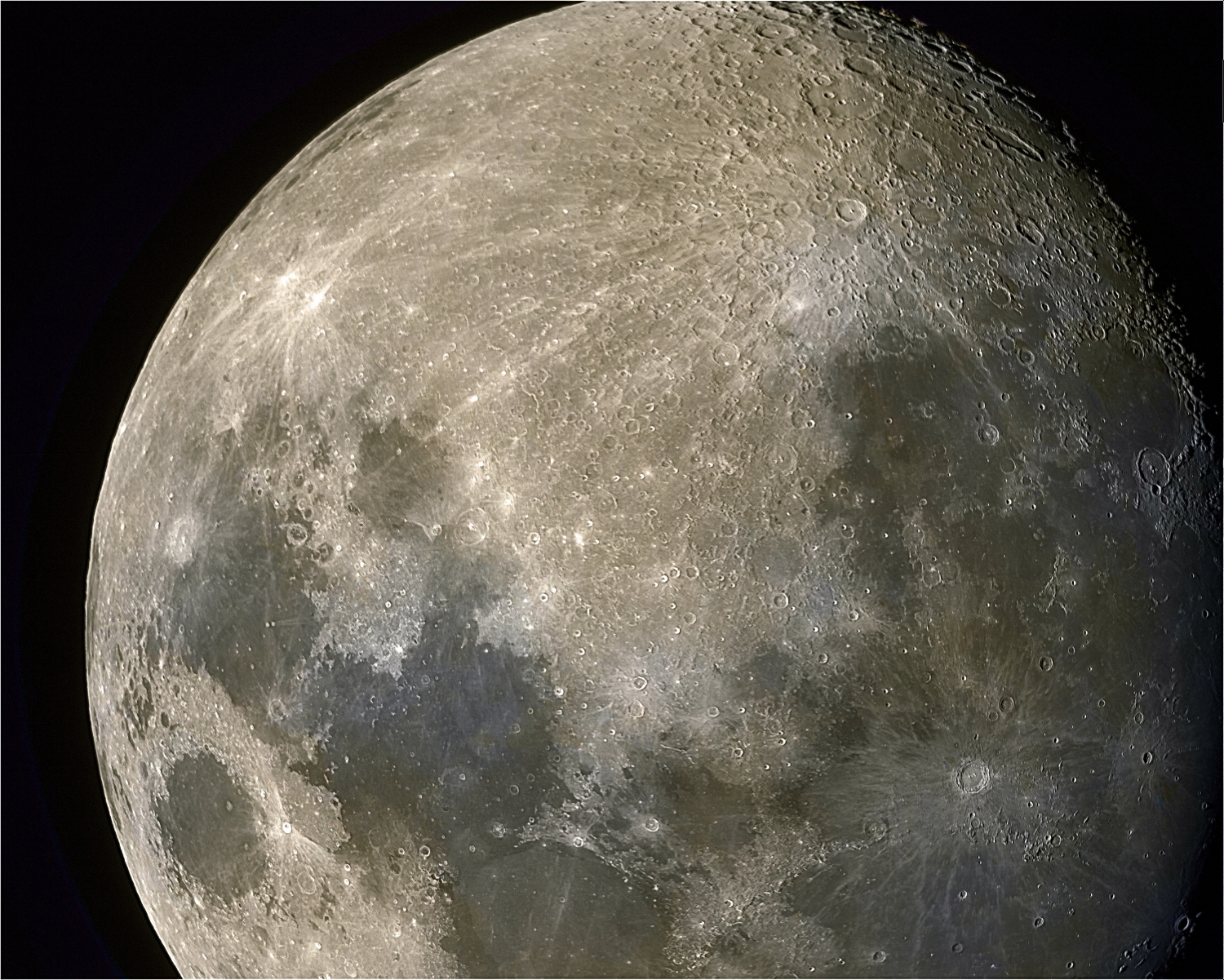
The surface of the moon on Tuesday, May 17, 2016.

This timelapse video of the total lunar eclipse of October 8, 2014 was shot from my home in El Dorado, CA using a Nikon D4 camera and 840mm lens The camera was mounted on an equitorial mount to follow its movement across the sky. Shooting one frame every 40 seconds, the eclipse you see here actually spanned 3 hours 50 minutes.





























The Moon is silhouetted against the sun during an annular solar eclipse viewed from Jiggs, Nevada October 14, 2023. Unlike a total solar eclipse, during an annular eclipse the Moon is farther from the earth and does not completely obscure the Sun’s disc.
The Moon is silhouetted against the sun during an annular solar eclipse viewed from Jiggs, Nevada October 14, 2023. Unlike a total solar eclipse, during an annular eclipse the Moon is farther from the earth and does not completely obscure the Sun’s disc.
The Andromeda Galaxy, also known as M31. This galaxy is approximately 2.5 billion light years from Earth, and is approximately 150,000 light years in diameter. (William Optics GT71, Celestron AVX mount, ZWO ASI 1600MM camera.)
Seen from West Sacramento, comet C/2020 F3, commonly referred to as comet 'Neowise' is visible in the northeast sky over the skyline of Sacramento, Calif. Sunday, Jul. 12, 2020.
The Milky Way arches above the red slave huts on the southern tip of Bonaire, Friday, July 26, 2019. The four-foot high huts were built in the 1850s, and are a remnant of a time when Dutch colonists used slave labor to extract salt from sea water on the south end of the island.
Visible from Shingle Springs, California on Monday, July 30, 2018 through smoke from California wildfires, the International Space Station (ISS) can be seen speeding across the face of the Sun at approximately 20,000 mph.
Aurora Borealis over the Lambalaekur farmhouse in Borgarnes, Iceland on Tuesday, December 26, 2017.
McArthur Burney Falls Memorial State Park in Burney, CA at 2:00 AM on Monday, September 10, 2018.
Total Solar eclipse seen from Mitchell, OR. on Monday, August 21, 2017.
In this image in Hydrogen-alpha light derived from video and in false color, sunspot activity is clearly visible as the moon partially obscures the sun during the total solar eclipse near Mitchell, OR on Monday, August 21, 2017.
A multiple exposure of the annular solar eclipse over Mt Shasta near McCloud on Sunday, May 20, 2012.
The last bit of sunlight disappears behind the moon in aphenomenon commonly called the "Diamond Ring" during the total solar eclipse near Mitchell, OR on Monday, August 21, 2017.
The corona is revealed during the total solar eclipse near Mitchell, OR on Monday, August 21, 2017.
Total solar eclipse taken in Todos Santos, Mexico on July 11, 1991. This is a composite of 9 different exposures to reveal subtle details that cannot be captured in a single exposure.
Visitors line up to look through a telescope at Squaw Valley Resort on Friday July 13, 2007.
A silhouette of the planet Venus against the sun during the Transit of Venus viewing event at the El Dorado Observatory in Placerville, CA on Tuesday, June 5, 2012.
The partially eclipsed moon is seen through a thin veil of morning fog over the skyline of Sacramento on Wednesday, January 31, 2018. This morning's total lunar eclipse coincided with a "blue moon" and a "super moon."
A flock of ducks flies past an ultralight pilot near White Rock Road in El Dorado Hills on Friday, March 14, 2014.
The Sun’s chromosphere in Hydrogen alpha light. This image was taken with a telescope equipped with a special filter (etalon) that only passes light from Hydrogen. These details would otherwise be lost due to the intense brightness of the underlying photosphere.
Due the Earth's rotation during a four hour exposure, the stars appear to spin around Polaris (the north star) in Lincoln, CA.
The Heart Nebula, also known as IC 1805, is approximately 7,500 light years from Earth and is approximately 200 light years across. It is a cloud of ionized hydrogen, oxygen, and sulphur gasses, and is a part of our own Milky Way galaxy. (William Optics GT71, Celestron AVX mount, ZWO ASI 1600MM camera.)
A Partial lunar eclipse seen from El Dorado, Calif., at 4:46 am Wednesday, October 8, 2014.
The "Supermoon" rises over the Sacramento skyline on Tuesday, September 9, 2014. When the moon's orbit brings it closest to Earth, or perigee, when it is full it is called a "Supermoon."
A waxing crescent moon in close proximity in the sky to the planet Venus (bright star in the center of the frame) and Mars (the red speck between two) seen through the branches of a tree in Auburn on Friday, February 20, 2015.
The moon is silhouetted against the sun in this annular solar eclipse near McCloud, CA on Sunday, May 20, 2012. Unlike a total solar eclipse, the sun is not completely obscured due to the moon's greater distance from the earth.
SETI researchers monitor the heavens with a field of radio telescopes at the Allen Telescope Array at the Hat Creek Radio Observatory in Hat Creek northern California on Thursday, September 1, 2016.
Alu Vali covers his eyes during a total solar eclipse in Hula, Papua New Guinea on November 22, 1984. The Papuan government distributed leaflets warning remote villagers of the risks of looking directly at the sun. Although it is safe during the total phase, Vali was unwilling to look. The total eclipse lasted only 51 seconds here.
The surface of the moon on Tuesday, May 17, 2016.
This timelapse video of the total lunar eclipse of October 8, 2014 was shot from my home in El Dorado, CA using a Nikon D4 camera and 840mm lens The camera was mounted on an equitorial mount to follow its movement across the sky. Shooting one frame every 40 seconds, the eclipse you see here actually spanned 3 hours 50 minutes.
